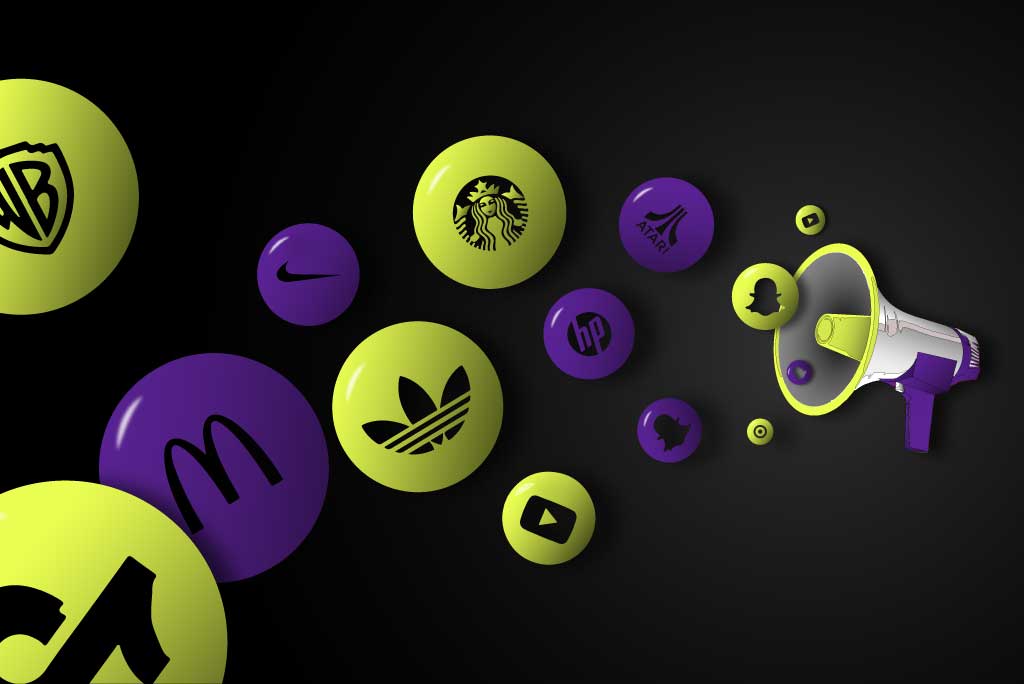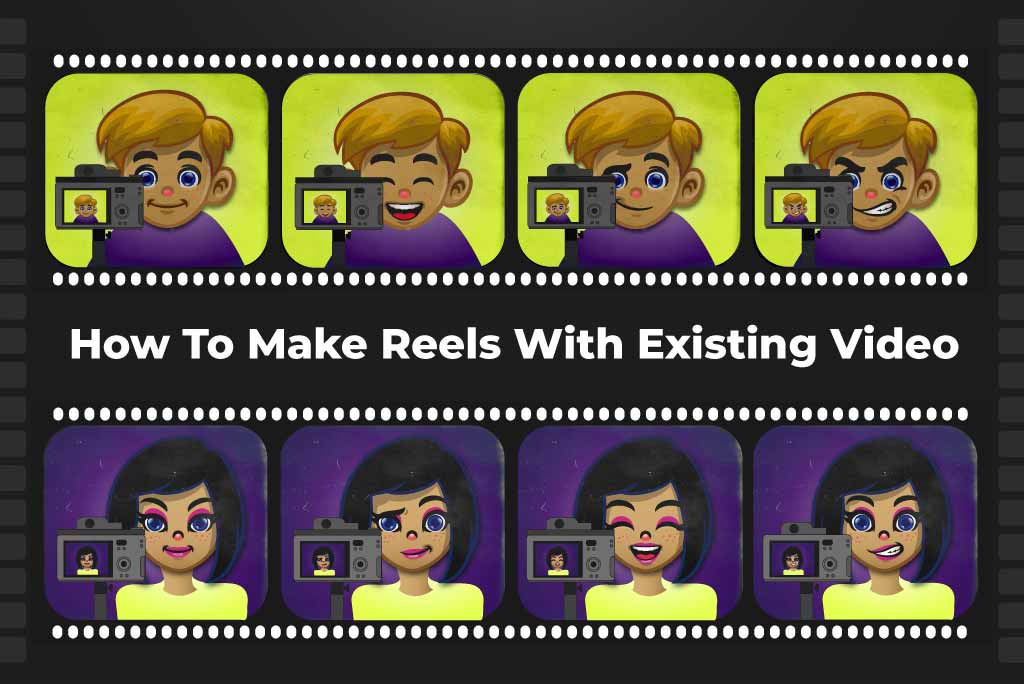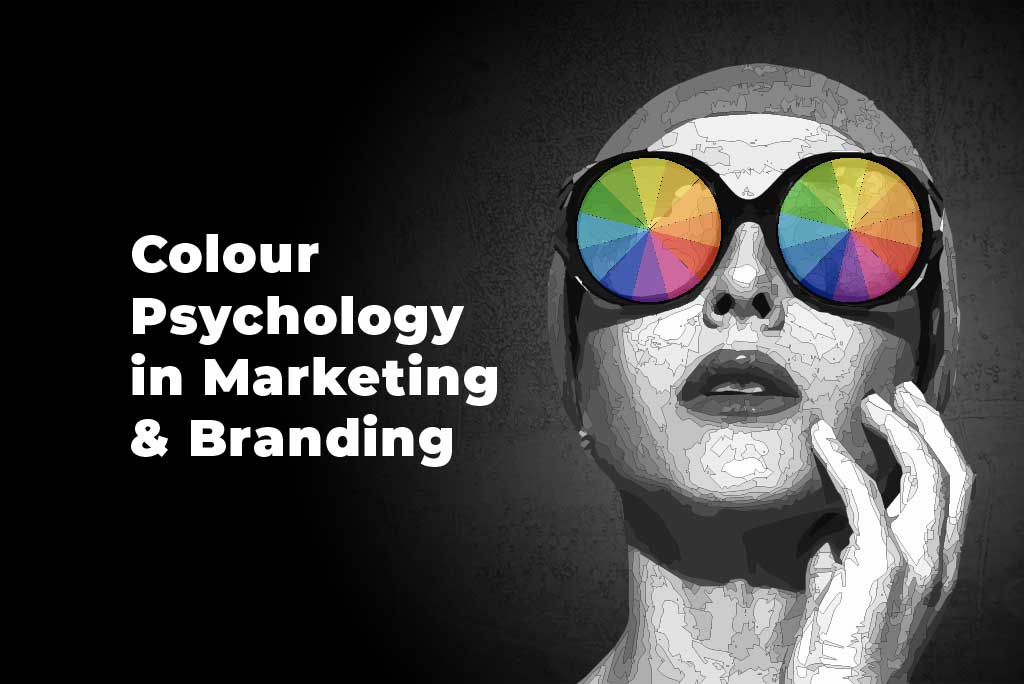Each progressive year, graphic design trends provide a window into how art reflects our society’s changing needs and perspectives. 2023 represents a departure from minimalistic designs and monochromatic colour schemes towards bold and divergent design styles. This year’s trends range from Y2K nostalgia to handmade illustrations and breathtaking psychedelic elements. The year, still young, is all about breaking free from the norm, reorienting perspectives and expressing freedom through creativity.
By keeping up with and comprehending new trends, designers demonstrate to their audience that they are engaged and in lockstep with the ever-changing sensibilities of cultural exploration. As Toni Cade Bambara, a writer and activist, once said: “The artist’s role is to make the revolution irresistible.” Indeed, graphic design trends are not just reflections of our times but catalysts for change themselves.
So which design trends are dominating the arena right now?
Radiant Gradients
A gradient, which is also referred to as a colour transition, involves a gradual merging of one colour into another (often, more than two colours can be blended together).
Gradients can serve as either the focal point or a background element in a design. Due to their ability to blend different shades of colour, gradients can also create new and unique colour combinations that feel fresh and modern, giving designs a distinct look and feel.
They offer endless possibilities to enhance a design, such as adding depth to a flat composition, creating an intriguing texture for a background or injecting vibrant colours into a photo. The gradient trend is currently very popular due to its ability to catch the eye and grab attention. The vivid and dynamic colour transitions create an energetic feel that makes designs stand out and appear more elevated.
Incorporating gradients in your logo design can give it a distinctive feel that sets a brand apart from competitors. Since the logo represents the brand, it’s an excellent way to showcase its colour scheme in a creative and visible manner. Designers can experiment with vibrant colours for a bold and striking impact or choose soft hues for a more subtle effect.
It may not actually be fair to define gradients as a trend per se. It implies that they disappear and re-appear, falling in and out of favour from one year to the next. The truth is that gradients are a staple of design, full stop. To leave them out of your design repertoire would be unwise. As enduringly popular and ubiquitous as gradients are, why would you ever put them away?
Creative Typography
3D Typography
While 3D typography has been around since the 1960s, the popularity of virtual and augmented reality has given it a new lease of life. This trend adds depth and dimension to the text, making it literally jump off the screen. Without being overwhelming, 3D letters are eye-catching both in animated videos and on flat backgrounds. The beauty of 3D typography lies in the fact that there are no hard and fast rules. With basic skills and the right design software, any existing font can be rendered into a 3D one. Alternatively, designers can let their imagination run wild and create a font from scratch, blurring the lines between typography, design and illustration.
Pixel Fonts
Unsurprisingly popular with the Gen X crowd, 2D typography has an iconoclastic charm inseparable from the 1980s. Pixel art, inspired by the first 2D video games, has made a comeback, thanks to the commodification of nostalgia in the cultural milieu. The retro 8-bit style can add a playful and whimsical touch to the design, though it may not suit every project. Many web interfaces and digital products can benefit from a bit of old-school charm. Using pixel fonts, designers can evoke warmer, fuzzier memories, giving their audience a glimpse of the past while holding it firmly in the centre of contemporary design sensibilities.
Psychedelia
The 1970s era’s psychedelic aesthetics are also back in vogue. This trend includes vivid and surreal artwork with bold colours, intricate patterns and optical illusions influenced by hallucinogenic experiences. The artwork often displays a kaleidoscopic effect that mesmerises with its blend of ebbing and repeating images. This trend is now also reflected in fonts, where the letters shift and blend in a soft and bright fashion rather than appearing as an anxious glitch.
Distorted Fonts
For more edge and atmosphere, distorted typography can create a gritty tone and introduce a sense of chaos or disruption to a design. Edgier brands that appeal to younger audiences can make great use of the bend and stretch tools in Adobe Illustrator. Letters can be torn and contorted in all manner of ways to create a sense of unease and disorientation. Whether using serif or sans-serif characters, the effects can be dramatic in either case.
This trend is not easy to master (less is always more), but it’s definitely worth exploring to create impactful designs.
Italics
At first glance, italics may seem unremarkable. However, they can add a sense of motion, drama or elegance to typography. Italicising a word or phrase can emphasise important information and come in handy when space is limited. Adjusting the slant of the italicisation can create a unique and innovative look, adding a touch of the surreal to a design. Playing with letter thickness can also yield surprising results.
Rounded Sans Serifs
Rounded sans serifs have a friendly and approachable feel and are often used for marketing products to younger or more casual audiences. This trend represents a shift away from the sharp and edgy designs that have been popular in recent years and is an excellent choice for designs that require a warm and welcoming vibe.
Surrealist Maximalism
As AI art continues to explore new territories, surrealist maximalism represents the meeting of human creativity and technology. Brands that have previously embraced clean and straightforward aesthetics may want to consider incorporating a bit of excess to stand out in a market saturated with visually compelling designs.
2023 sees a growing trend of brands embracing the use of 3D to create imaginative visual storytelling, blurring the lines between the real and the surreal. Surrealist maximalism, one of the more challenging styles to describe, takes a composition, say a painting, illustration or photograph, and selectively exaggerates elements. AI, 3D or various distortion tools can make an otherwise ordinary picture feel familiar yet unfamiliar, natural yet unnatural.
Surrealist maximalism is a rebellion against the modern trend of simplistic and clean designs, offering a visual feast that is bold, artistic and full of colour. This style is not meant to be realistic or make sense in the physical world but rather draws people into a unique and almost alternate reality. Maximalism is defined by excess and the idea that more is actually more. Surrealist maximalism creates a highly saturated and intense visual feast that is both memorable and capable of conveying multiple messages at once.
In 2022, Coca-Cola released their limited-edition Dreamworld flavour campaign, using 3D design to create a surreal and fantastical look and feel that showcased their vibrant range of flavours.
Given the frenetic nature of modern culture and its voracious appetite for technological innovation, this more-is-more design approach will only grow in momentum well beyond this current year and the year after that.
Motion Graphics
Animation and motion graphics have become increasingly important for creative advertising and marketing, providing new ways to present products and services in the modern digital space. From small in-app animations to full promotional videos that raise brand awareness, motion graphics are utilised across all industries and businesses. Following animation trends requires a keen eye and a refined taste, and many companies are using motion graphics to give their approach to marketing a more dynamic and tactile edge.
Animation
A brand logo, appearing still and lifeless in the centre of a frame, is not as appealing as one that glides into frame and spins around before settling comfortably into its spot. Elements that dance and flutter across the screen appeal enormously to the eye, eliciting a little intrigue and drama and lifting an otherwise flat presentation into a realm where the viewer is engaged and entertained at the same time.
Restricted Colour Palette
Here it is less that is more. Simple words can convey more meaning, and the same holds true for colours. The current trend involves using a limited number of primary colours — chosen strategically based on the insights from colour psychology — to narrate a visual story. Instead of unrestrained use of colour that can obfuscate a design element, simple colour selections, with no more than three colours, can maximise the viewer’s comprehension of elements while they’re in motion.
Kinetic Text/Lower Thirds
Generations of people raised on television will be intuitively familiar with animated text. From the opening credits of a popular sitcom to the closing crawl of a blockbuster’s cast and crew, the text needn’t be static and utilitarian. It can move in simple or extravagant ways, like any design element. Anyone familiar with the nightly news will see a breaking news story scrolling across the bottom third of the screen. Lower thirds are a staple of motion graphics — hardly a trend but always worthy of a mention.
Retro Design
For those who cherish the 60s, 70s or 80s, the good news is that retro design is thriving. Since its welcome return in 2019, the retro trend has dominated the design world. Be it industrial and interior design, graphic design, fashion, social media or pop culture as a whole, the collective urge to look back and seek comfort from the past has never been more lucrative.
The 1960s were a significant era for graphic design, characterised by vibrant colours, dynamic patterns and LSD-induced psychedelic art. Eschewing the restrained and earthy hues of the 1950s, the design of the 1960s ventured into more imaginative and experimental terrain. Contemporary brands such as Gucci and Pepsi often lean into this trend to extraordinary effect.
The 1970s, paradoxically, are also very much a thing of the present. The decade of disco, funk, free love and bell bottoms informs the thick, vibrant colours of interior design and high-end fabrics. Large circles, floral patterns and curvaceous fonts create the sense of a lost time now recovered and repurposed for the modern world.
Retro design is such an idiosyncratic style that, over time, it can grow a little sickly and overcooked. So striking is this style that one can expect it to fall in and out of favour rather quickly.
Y2K Aesthetic
Those old enough to remember the weeks leading up to the millennium will remember the quiet unease and intrigue surrounding its significance in the calendar. Some thought there would be a glitch in the matrix, that it was the end of the world, that the Mayans would show up in spacecraft and start spiriting people away. The magic of the Y2K style lies in the tension between its commitment to the past and the future. Like having one foot in the 20th century and the other in the 21st, this style blends touches of retro with a vision of the future.
For the graphic designer, gradient hues, chunky typography and 3D shapes are some of the elements best deployed to capture the Y2K zeitgeist. The style demands bold colours, metallic and glitter effects, and futuristic fonts. For example, leaflets for illegal raves were often designed this way. Think of design clashing with the antique futurescape of Philip K Dick or Isaac Asimov. Given the current state of the world, no style is more prescient than this one.
Brutalism
Post-war Europe entered a dark period of reflection and reconstruction. Borrowing from modernism’s response to technological and social mores, ornamental frills and impractical (though homely) decorative features were tossed for sparer, utilitarian constructions. The fun times were indeed over.
The brutalist design reflected the trauma and protectionist attitudes of a broken public. Buildings of the brutalist era were typically massive, monolithic slabs of concrete, huge geometric blocks devoid of character or charm, but the impenetrable walls and meagre windows provided a sense of safety and reliability. These were as much tanks as they were buildings.
Architects and graphic designers are particularly fond of brutalism’s cold indifference to beauty, its economy of design and exacting angles. The muted colours, if any, convey unease and alienation. Designers of dystopian movie posters or sci-fi novellas often turn to brutalism’s beautiful ugliness for inspiration.
As a style, it is contentious. It dares the viewer to hate it. But to designers, its preciseness and commitment to function and function only remain compelling propositions when contemplating a new design.
Hand-Drawn Illustrations
Hand-drawn designs are gaining popularity as AI generators become more prevalent. Despite the additional time and effort required to create them, hand-drawn designs are more visually appealing and distinct. They add value and authenticity to a brand and cannot be easily replicated due to their unique appearance.
This singular approach can be incorporated into lifestyle, travel and restaurant apps to create a welcoming and artistic environment. By utilising this simple old-school approach, designers can produce bespoke, personalised designs only they could have produced. Adobe this isn’t.
The use of hand-drawn images is a true return to the source. It’s how designers started before computers took charge. It is only natural that this innate skill be incorporated into the world of modern digital design.
Website designers, mobile designers, packaging designers and social media designers are adopting this more rustic approach, recognising its effect on a public that craves warmth, familiarity and innocence.
3D Design
With dramatic advancements in design technology, high-quality 3D renderings can be performed by a humble designer sat at home rather than in an expensive studio in the Hollywood Hills. Accessibility to this level of 3D processing has democratised the design industry. As more designers are able to offer 3D products at competitive prices, more demand will ensue. Responding to this revolution in 3D adoption, heavy hitters like Adobe and Blender will be incentivised to improve and refine their 3D applications.
In addition to the demand for immersive product experiences, the 3D trend has also influenced the use of 3D in logos, icons, typography and many other creative assets. Whether or not one has experience with 3D rendering, designers can still experiment with this style by adding depth, shadows and texture.
3D design is not restricted to digital art. It can also be utilised in product design, architecture and even illustrations. Text is also enormously effective when rendered as 3D objects. Titles are dynamic, tangible and punchy. 3D text is particularly versatile, and it can complement multiple styles. For example, retro styles are a perfect complement to the 3D text.
Inclusive Visuals
Graphic designers and visual artists are increasingly embracing diversity and incorporating it into their designs. This not only includes representation of different races, sexual orientations and cultures but also extends to disability, accessibility and gender diversity in the illustrations and photography used in branding and advertisements.
As organisations across all industries prioritise diversity, equity and inclusivity initiatives, they are also using more diverse and inclusive stock photography, art and messaging on their websites, social media and advertising campaigns. In 2023, diversifying the visuals associated with your organisation will continue to be vital in building and promoting a positive brand image.
At times, unconscious exclusion can result from stereotypes and imagery, like using a masculine image as the default profile picture on social media platforms. Such practices can make non-male users feel marginalised. Similarly, featuring slender women as models is another commonly observed instance of exclusion. In 2023, it is essential to prioritise accessibility, diversity and inclusion in design to ensure equal representation for all groups.
Conclusion
2023 has seen a surprising mixture of design styles rising to the surface. Perhaps the turbulence of the post-COVID-19 era and the resurgence of war in Europe have triggered some collective need to escape, as nostalgia appears to be the connecting thread running through all these trends. The desire to reanimate a happier time appeals to consumers on a gut level. Designers and business owners should recognise that if nostalgia is the driving force behind current consumer habits, then any one of the design themes described above should serve them very well indeed.
Altlier is an award-winning digital marketing agency. Our team produces eye-catchy and share-worthy graphic design content, including social media images, infographics, logos, banners, posters and flyers. To find out how we can help your business, check out our services page or get in touch.




